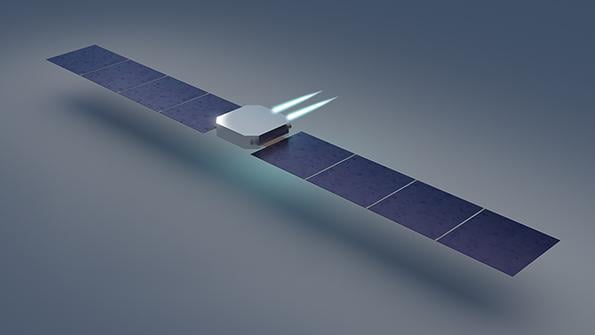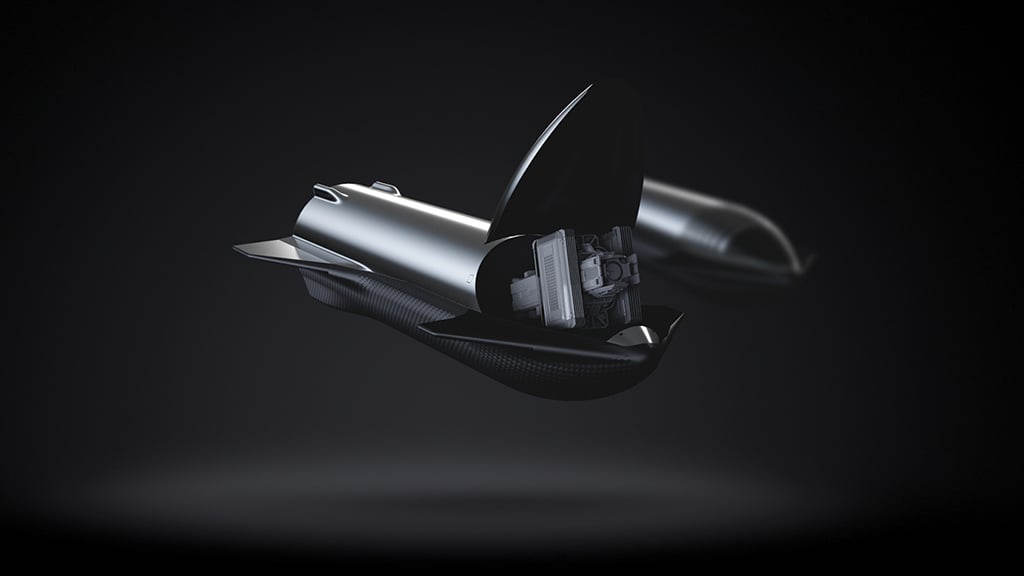
The Mega-class satellite is designed to span 27 m from tip to tip of its solar panels.
While everybody else is going small, K2 Space is going big. The startup is banking on SpaceX’s Starship, a fully reusable, super-heavy-lift launch vehicle, to reduce costs to $100 per kilogram, enough to make it affordable to launch its 4.5-metric-ton Mega-class satellite bus.
The Los Angeles company unveiled its plans on March 10 and announced that it had raised an $8.5 million seed round led by First Round Capital and Republic Capital, with participation from Boost VC, Also Capital and Countdown Capital, among others.
- More solar panels could enable higher-power communications systems
- A spacious bus might allow for larger Earth-observation sensors
K2 Space believes lower launch costs as well as room for larger, commercial off-the-shelf components ought to allow it to do something previously not possible: develop a large satellite for $15 million.
“It’s a large satellite at small satellite prices,” K2 Space CEO Karan Kunjur said at the Satellite 2023 show on March 14 in Washington. Kunjur cofounded the company with his brother Neel, the startup’s chief technology officer.
Yet K2 Space is swimming against the stream in attempting to develop a large satellite. Most satellite companies are investing in small satellites.
Shrinking electronics and hardware as well as falling component prices have made minifridge-size satellites useful for a variety of missions that could previously only be accomplished by larger satellites. Coupled with lower launch costs brought about by SpaceX’s partially reusable Falcon 9 launch vehicle, companies are launching constellations of small communications and Earth-observation satellites.
Small satellites still come with size, weight and power constraints, however, forcing developers to make performance and cost trade-offs. That is exactly where K2 Space sees an opportunity.
“Power is probably one of the first constraints that we’re addressing,” Kunjur says. “If you need more power or you need to go bigger, your option is to move up into a totally different class of satellite that can cost anywhere from $75 million to hundreds of millions.”
Indeed, K2 Space gets its name from the Kardashev scale, a method devised by Soviet astronomer Nikolai Kardashev to measure a civilization’s level of technology by the amount of energy it can harness. A Kardashev Type II (K2) civilization can harvest all the energy radiated by its star.
K2 Space’s Mega-class satellite, designed to span 27 m (88.6 ft.) from tip to tip of its solar panels, would provide a lot of power, performance that is especially important for increasing throughput of communications satellites, Kunjur says. The satellite bus will be roomier and have a payload capacity of 1 metric ton (2,200 lb.).
“On the sensing side, optical aperture size is everything,” Kunjur says, adding that a bigger camera could allow operating at higher orbits, for instance. “Using larger apertures allows you to generate higher-resolution imaging at altitudes between 600-1,500 km [370–930 mi.], which require fewer satellites to have global coverage and [in] less crowded orbits.”

Much of the promise of K2 Space’s Mega-class satellite depends on the successful launch of SpaceX’s Starship launch vehicle. The Hawthorne, California-based company is eyeing April for the inaugural orbital flight of the vehicle.
Starship is designed to carry more than 100 metric tons to low Earth orbit before landing back on Earth. The reusable super-heavy-lift launch vehicle has a fairing diameter of 30 ft. across, will allow for payloads of up to 59 ft. in height and will have a total volume of 38,800 ft.3, SpaceX says. The company designed the Starship with larger payloads in mind.
“With a payload compartment larger than any fairing currently in operation or development, Starship creates possibilities for new missions, including space telescopes even larger than the James Webb,” the company says on its website, noting the 6.2-metric-ton NASA space telescope launched in 2021.
Though Starship is what inspired K2 Space, the company aims to make its Mega-class satellite “launch vehicle-agnostic,” compatible with the Falcon 9 and other similar-size systems, Kunjur says.
The company is also working on a follow-on “Giga-class” satellite, which would have a 15-metric-ton payload capacity and would be compatible with Starship and Blue Origin’s in-development New Glenn heavy-lift orbital launch vehicle.
“It will be the largest and highest-power commercial satellite ever deployed in space,” Kunjur says.
K2 Space plans to focus on developing the Mega-class bus and integrating customer components with the satellite. It also looks to manufacture specialized components for the large satellite, including reaction wheels, avionics systems, high-power systems and thermal systems.
The company sees lower launch costs as enabling the use of heavier commercial off-the-shelf parts as well. “You’ll be able to trade potentially heavier materials, more terrestrial materials, that also come at a lower cost and use mass to build more redundant features like being able to have triple redundancy,” Kunjur says.
K2 Space is targeting customers interested in communications and Earth-observation missions within the commercial sector and U.S. military. Later, the company might work on scientific spacecraft, Kunjur says.
In 2024, the startup plans to launch some of its components into space for a demonstration mission. By 2025, the company would like to launch its first Mega-class satellite.





